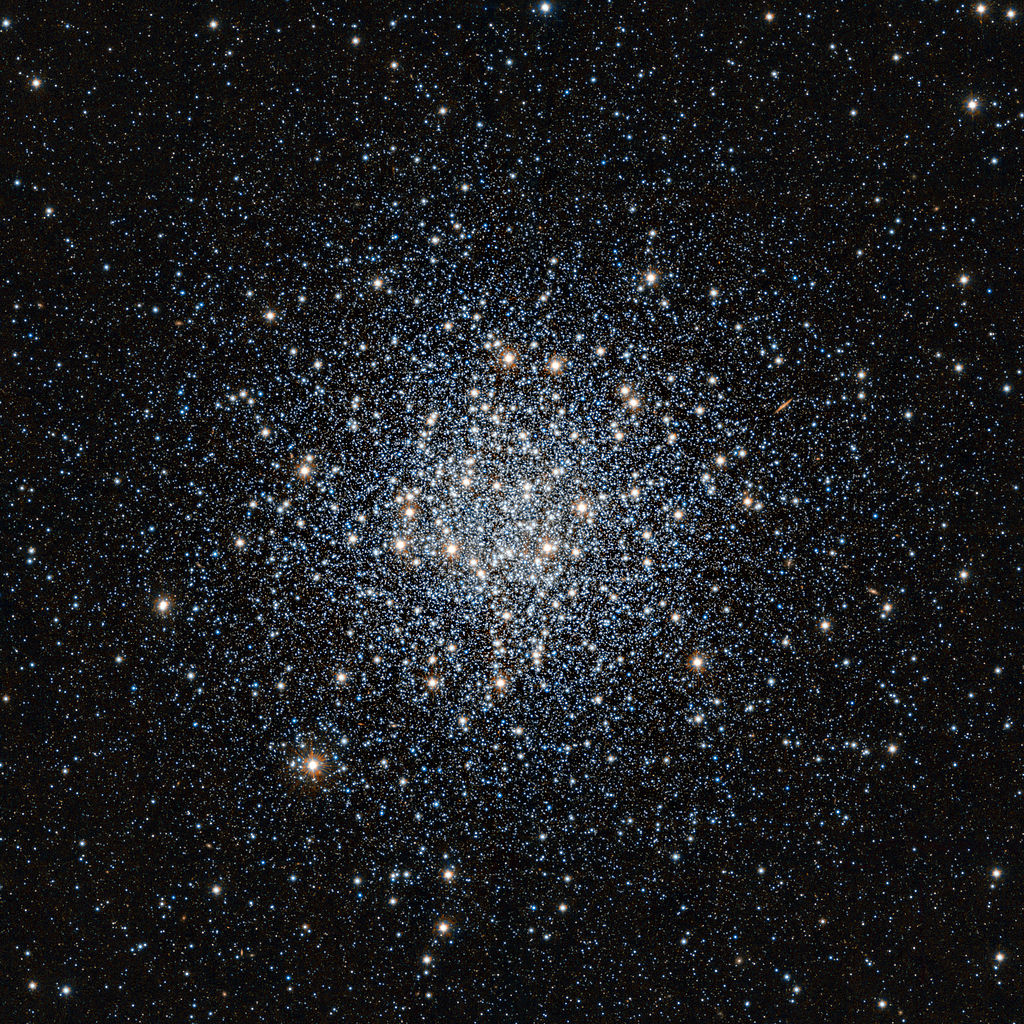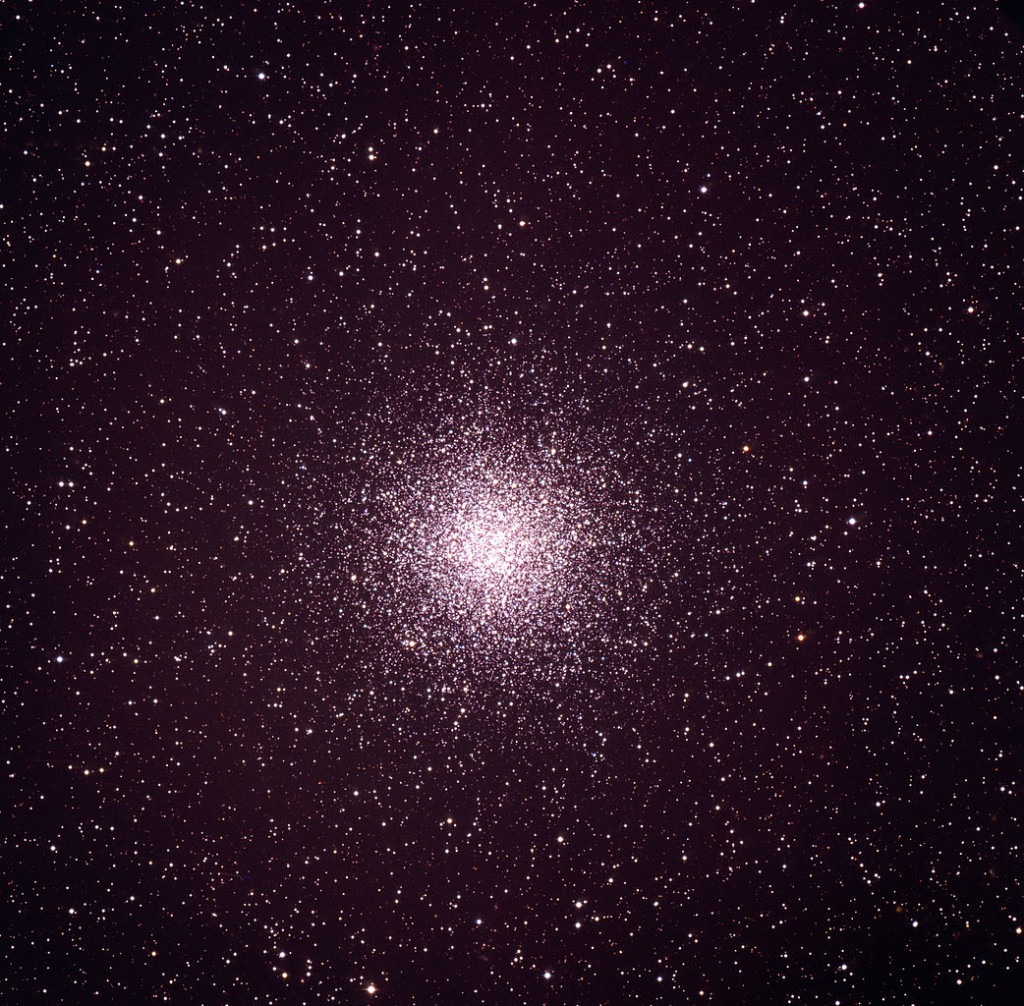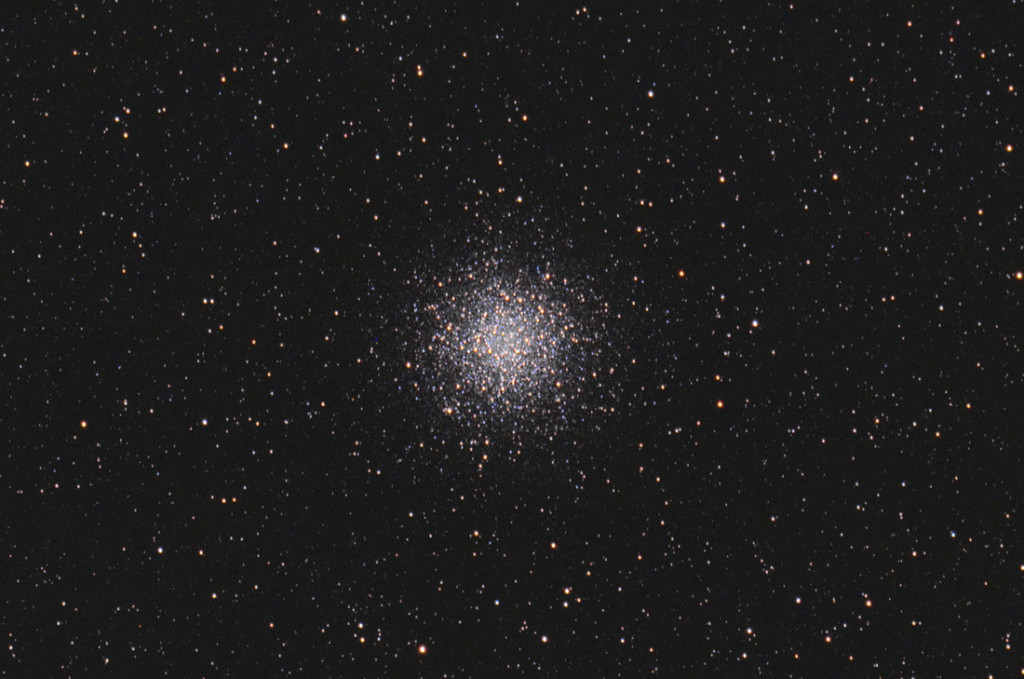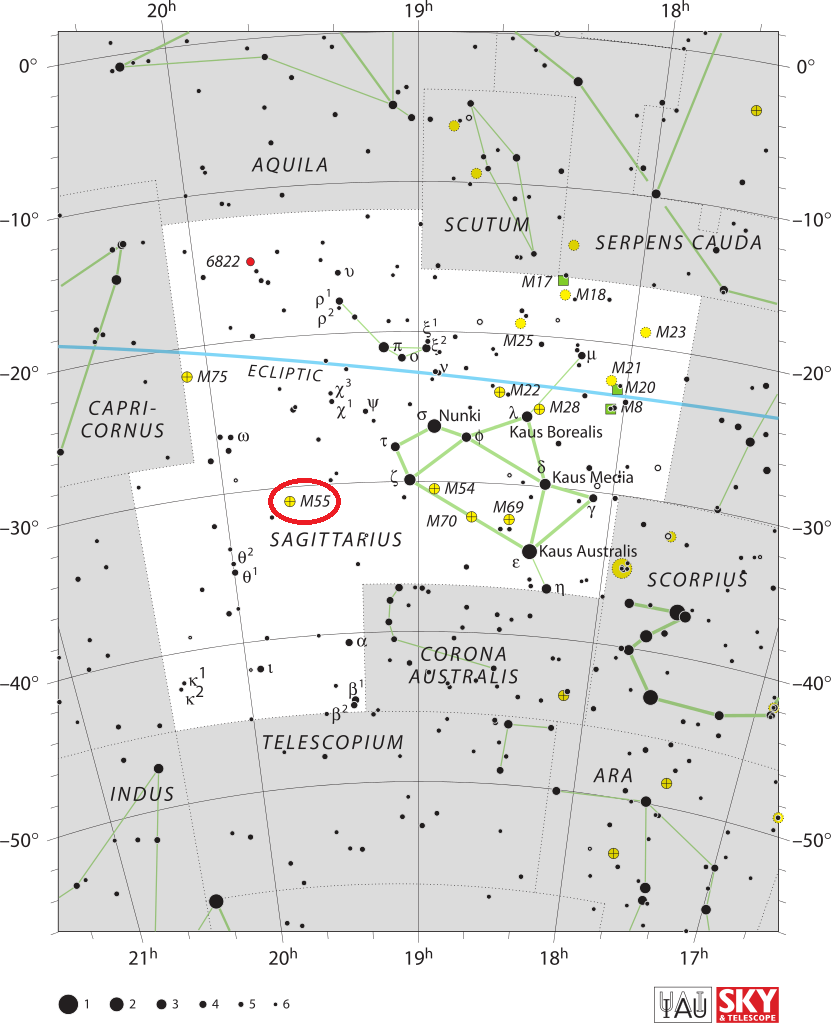Messier 55 (M55), also known as the Summer Rose Star, is a globular cluster located in the constellation Sagittarius. The cluster has an apparent magnitude of 7.42 and lies at a distance of 17,600 light years from Earth. It has the designation NGC 6809 in the New General Catalogue.
Messier 55 occupies 19 arc minutes of apparent sky, which is almost two thirds the size of the full Moon. The cluster has a linear diameter of almost 100 light years. It can be seen in 50 mm binoculars, but can only be resolved in medium-sized and larger telescopes. 8-inch telescopes will easily resolve many of the cluster’s stars.
Messier 55 can be located by following an imaginary line drawn from Kaus Media, Delta Sagittarii, to Ascella, Zeta Sagittarii, and extending the line eastwards for about 17 degrees.
The cluster has a low surface brightness and requires good observing conditions to be seen, even in binoculars.
With a density classification of XI, M55 is relatively diffuse and quite loose in appearance. It looks grainy even in smaller binoculars, unlike most globulars, which appear hazy and nebulous. The best time of year to observe M55 is in the months of June, July and August.

Messier 55 has a mass about 269,000 times that of the Sun. It contains roughly 100,000 stars. Only 55 variables have been detected in the cluster’s central region. The stars in the cluster are mostly old and red, but M55 also contains an unusually high number of blue stragglers, old stars that appear younger, bluer and more luminous than similar stars their age as a result of interactions and mergers with neighbouring stars in the cluster.
Messier 55 is one of the most metal-poor globular clusters known. It has only 1.1 percent of the Sun’s heavy elements.
The cluster was discovered by the French astronomer Nicolas Louis de Lacaille from South Africa on June 16, 1752. Lacaille catalogued the cluster as Lac I.14, noting that it “resembles an obscure nucleus of a big comet.”
Charles Messier was unable to find the object from Paris until July 24, 1778 because, being positioned under the Teapot in Sagittarius, the cluster never rose high enough in the southern sky to be an easy target. Messier had started looking for it as early as 1764. This was how he described the object once he had finally found it:
A nebula which is a whitish spot, of about 6′ extension, its light is even and does not appear to contain any star. Its position has been determined from zeta Sagittarii, with the use of an intermediate star of 7th magnitude. This nebula has been discovered by M. l’Abbe de LaCaille, see Mem. Acad. 1755, p. 194. M. Messier has looked for it in vain on July 29, 1764, as reported in his memoir.

William Herschel resolved the cluster into stars in 1783 using a 20-foot telescope. He wrote, “With 250 fairly resolved into stars; I can count a great many of them, while others are too close to be distinguished separately.”
John Herschel added the cluster to his catalogue as h 3798 and later included it in the General Catalogue as GC 4503. He described it as a “globular cluster; pretty bright; very large; round; very gradually little brighter toward the middle; diameter in RA 30.0s [7.5′]; all resolved into separate stars of 13 to 16 m; not so compressed toward the middle as to run together into a blaze or nipple.”

FACTS
| Object: Cluster |
| Type: Globular |
| Class: XI |
| Designations: Messier 55, M55, NGC 6809, Summer Rose Star, GCl 113, C 1936-310, MWSC 3150 |
| Constellation: Sagittarius |
| Right ascension: 19h 39m 59.71s |
| Declination: -30°57’53.1” |
| Distance: 17,600 light years (5,400 parsecs) |
| Age: 12.3 billion years |
| Number of stars: 100,000 |
| Apparent magnitude: +7.42 |
| Apparent dimensions: 19′ |
| Radius: 48 light years |
LOCATION
